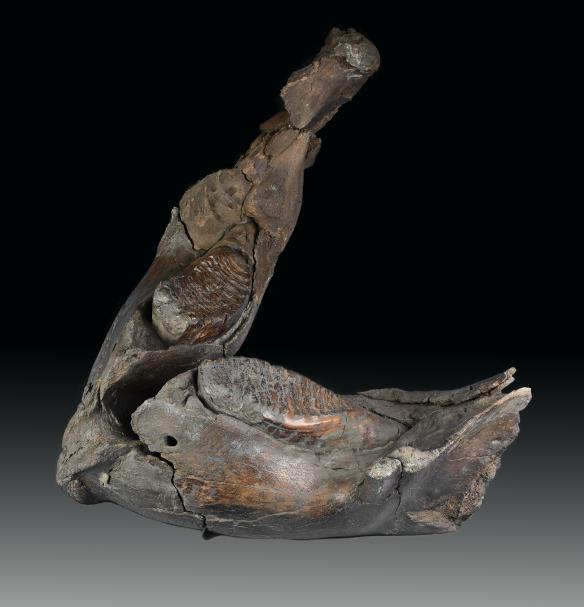Steppe mammoth fossil (Mammuthus trogontherii)
Accession Number NWHCM : 1996.181
Description
Skeleton of Mammuthus trogontherii (steppe mammoth) (known as the West Runton Mammoth or WRM), from the West Runton Freshwater Bed, Pleistocene, Cromarian, West Runton, Norfolk. Collected by excavation by Norfolk Archaeological Unit, October to December 1995, as part of Norfolk Museums Service West Runton Elephant Project
Read MoreSteppe mammoth fossil (Mammuthus trogontherii)
This particular mammoth belongs to the species known as Steppe Mammoths, Mammuthus trogontherii, which were the ancestors of the later, smaller Woolly Mammoths of the Ice Ages. It was the largest species of elephant that ever lived (4m at the shoulder, and when alive weighed twice as much as a modern African bull elephant – around 15 tonnes). At about 85%, it is the most complete specimen of the species to have been discovered anywhere in the world. The mammoth dates from the Cromerian stage of the Pleistocene Period (about 700,000 years ago), and is the oldest mammoth skeleton to have been found in the UK. It was excavated from the internationally important, fossil-rich ‘West Runton Freshwater-bed’. These river sediments were deposited before the onset of the Ice Ages, and form part of the ‘Cromer Forest-bed’ deposits. The presence of a damaged right femur indicates that the animal was severely disabled, and probably died as a result of not being able to get up after slipping in mud. Some of the bones have tooth marks on them, and Spotted Hyaena (Crocuta crocuta) droppings were also preserved – indicating that scavenging took place. Some bones are crushed – the result of trampling during burial (probably by other mammoths).

